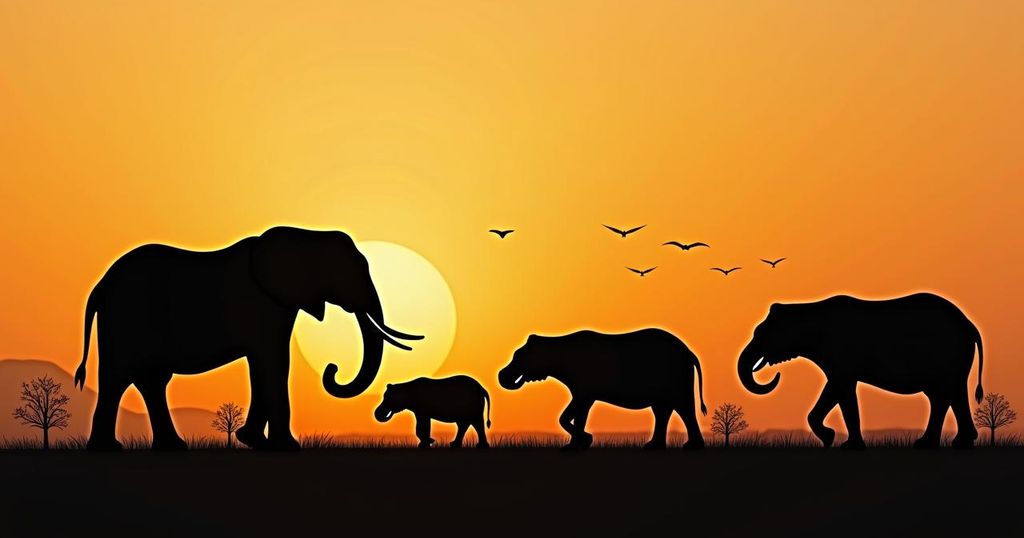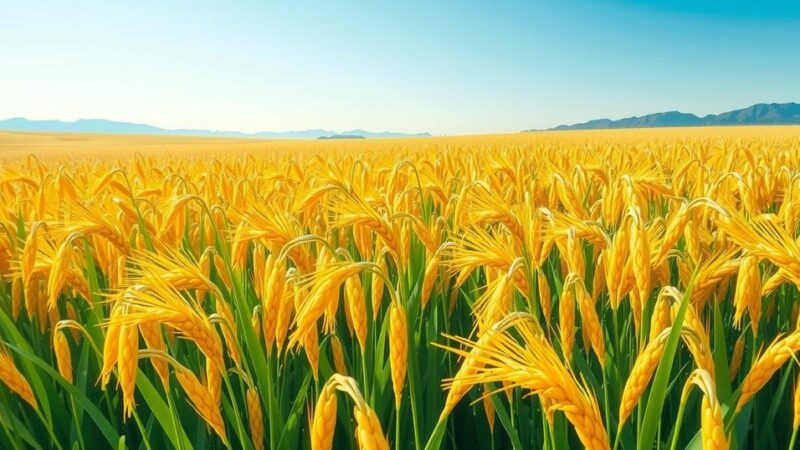Namibia is culling over 700 wild animals, including elephants and hippos, to provide meat for its hungry citizens in response to the worst drought in a century. The severe drought has led to a humanitarian crisis with significant food shortages affecting nearly half the population, prompting the government to justify the culling as necessary for survival and ecological management amid rising human-wildlife conflict.
Namibia is facing an acute humanitarian crisis exacerbated by its most severe drought in over a century, leading the government to initiate a culling program for wild animals, including elephants and hippos, to provide meat for its hungry population. This decision comes as food reserves dwindle to a precarious 16% of capacity, with nearly half of Namibia’s 2.5 million inhabitants expected to experience food insecurity during the lean season from July to September. The United Nations has classified the situation as a humanitarian emergency, stressing the dire conditions experienced by many locals. The drought, noted to have begun in October 2023, has been predominantly driven by rising global temperatures and impact from the El Nino weather phenomenon, aggravating an already vulnerable agricultural sector reliant on adequate rainfall. With more tragic implications, approximately 84% of Namibia’s food supplies have been exhausted, leading to increased cases of acute malnutrition and non-communicable diseases such as cholera. This ongoing crisis has also heightened risks of gender-based violence, particularly for women and girls tasked with fetching water from increasingly distant sources. In response to mounting human-wildlife conflicts as both humans and animals vie for scarce resources, the Namibian government has contracted professional hunters to cull a specified number of animals. The culling plan includes 723 animals, comprising of hippos, impalas, zebras, elephants, and buffaloes, among others, from several game parks and communal areas deemed to have sustainable animal populations. So far, 56,875 kilograms of meat from wild animal culls has been set aside for governmental aid efforts. Faced with an escalating crisis, the Namibian authorities have justified the cull by asserting that it aligns with the nation’s constitutional mandate, which seeks to utilize natural resources for the benefit of its citizens. Despite international concerns about wildlife conservation, Namibia’s approach aims to address both food insecurity and manage elephant populations effectively to mitigate human-wildlife conflicts. As the culling program unfolds, Namibia’s approach may influence broader discussions on wildlife management amidst climate challenges and the necessity for food security.
Namibia is currently grappling with its most severe drought in decades, significantly affecting food production and availability. Approximately 84% of the country’s food reserves have been depleted due to prolonged dry conditions, leading to a humanitarian crisis that the United Nations has labeled as grave. The drought is attributed to climatic changes exacerbated by the El Nino phenomenon, affecting agricultural yields across Southern Africa, particularly in Namibia, Zimbabwe, Malawi, and Zambia, which have declared emergency statuses. In light of these conditions, Namibia’s government has opted to cull certain wildlife populations to provide sustenance to its citizens. This decision is framed within the context of rising human-wildlife conflicts and a need for effective wildlife management, as the populations of elephants in particular have soared due to conservation successes since the 1990s. The managed culling aims to restore balance and provide necessary relief to the human populace suffering from food insecurity.
In summary, Namibia is undertaking a controversial culling program amid an unprecedented drought, which has instigated food shortages and a humanitarian crisis. The government aims to provide meat to the afflicted population while managing wildlife populations that have grown in conjunction with diminishing resources. With significant international concern regarding wildlife preservation, Namibia’s actions reflect the pressing need for a multi-faceted approach to address both human needs and ecological balance amidst challenging climate conditions.
Original Source: www.aljazeera.com






